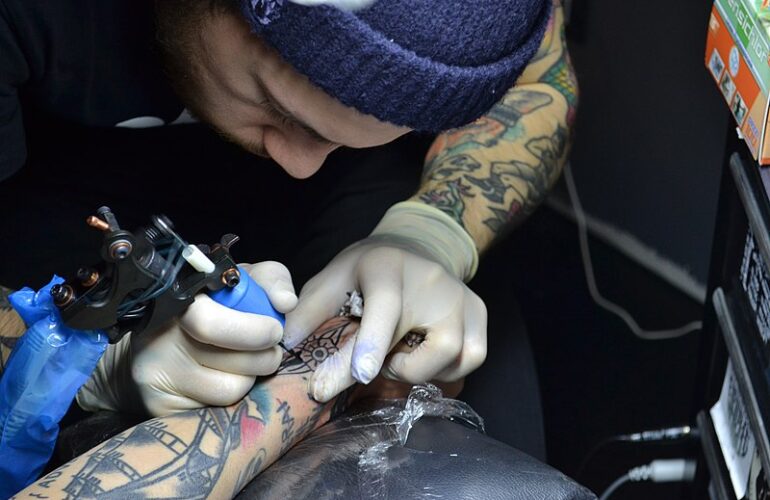Tattoos often stand as a testament to a memory, a belief, or a personal aesthetic choice. They are vibrant and sharp when fresh, but some tattoos have undergone a noticeable color shift over the years. This phenomenon, where the tattoo slowly turns from its initial rich black or blue to a faded green, has been a subject of much curiosity.
Composition of Tattoo Inks
Before getting to why tattoos turn green, we need to understand the ink components. The inks used in tattoos are not just simple dyes. They are complex formulations comprising:
- Pigments: These are the particles that provide the color to the tattoo. They can be organic or inorganic. They are suspended in the carrier solution.
- Carriers: These are the solvents that carry the pigment particles. They ensure that the pigments are evenly distributed, free from pathogens, and can be easily injected into the skin.
The combination of pigments and carriers determines the ink’s quality, longevity, and how it interacts with the skin.
Human skin isn’t just a single layer; it’s a complex structure. The outermost layer, the epidermis, constantly sheds and renews itself. Thus, for a tattoo to be permanent, the ink needs to be injected into the dermis. If it were placed in the epidermis, it would simply shed away with the dead skin cells.
Since ink with better quality often costs more, make sure to check the tattoo price in Bali to get the gist of how good the ink the artists/studios use.

The Green Phenomenon: Factors at Play
Not all tattoo inks are created equal. While modern, high-quality inks are designed to retain their color and integrity for decades, older or cheaper inks might not fare as well. Some of these inks contain impurities or inferior pigments that break down over time, resulting in a greenish hue.
Just as the sun can bleach curtains and fabric, it can also affect the pigments in tattoos. Constant exposure to UV rays can degrade the ink particles, especially if the tattoo isn’t protected by sunscreen or clothing. As the ink degrades, underlying colors can emerge. Many black inks, surprisingly, have green undertones which become visible as the ink fades.
Everyone’s skin is unique, both in tone and structure. A tattoo’s final appearance can be influenced by the depth at which it’s placed. Tattoos too close to the surface might fade faster, while those too deep might blur. Skin tone also plays a role. On some skin tones, certain ink colors might appear more vibrant or more muted, and this can influence the perceived color change over time.
As with everything, time does leave its mark on tattoos. Even with the best care and top-quality ink, tattoos will fade slightly. The ink particles spread and diffuse under the skin over the years, leading to a more muted appearance. This dispersion, combined with the green undertones of many black inks, contributes to the green shift.
Our body is designed to protect itself. When ink is injected into the skin, the body recognizes these foreign particles and tries to get rid of them. White blood cells attempt to “eat” the ink particles and carry them away. This defense mechanism, over long periods, can lead to the ink breaking down and the tattoo fading.
Guarding Against the Green Shift
One of the primary defenses against a greenish tattoo is starting with high-quality ink applied by a seasoned tattoo artist. Experienced artists understand the intricacies of skin types, ink qualities, and tattoo placements.
Post-tattoo care isn’t just about preventing infections. Proper aftercare ensures that the tattoo heals well, which can retain its vibrancy for longer. This includes keeping the tattooed area clean, moisturized, and protected from excessive sun exposure.
Consider your tattoo as a piece of art. Just as paintings are kept away from direct sunlight to prevent fading, tattoos should be protected too. Regular application of sunscreen or covering up the tattooed area can shield the ink from harmful UV rays.
Conclusion
Tattoos turning green is a culmination of various factors, from ink quality, sun exposure, and the depth of application to the body’s natural responses. While some fading and change are inevitable as tattoos age, understanding the reasons behind the transformation and taking preventive measures can help maintain the tattoo’s original appearance for longer.
